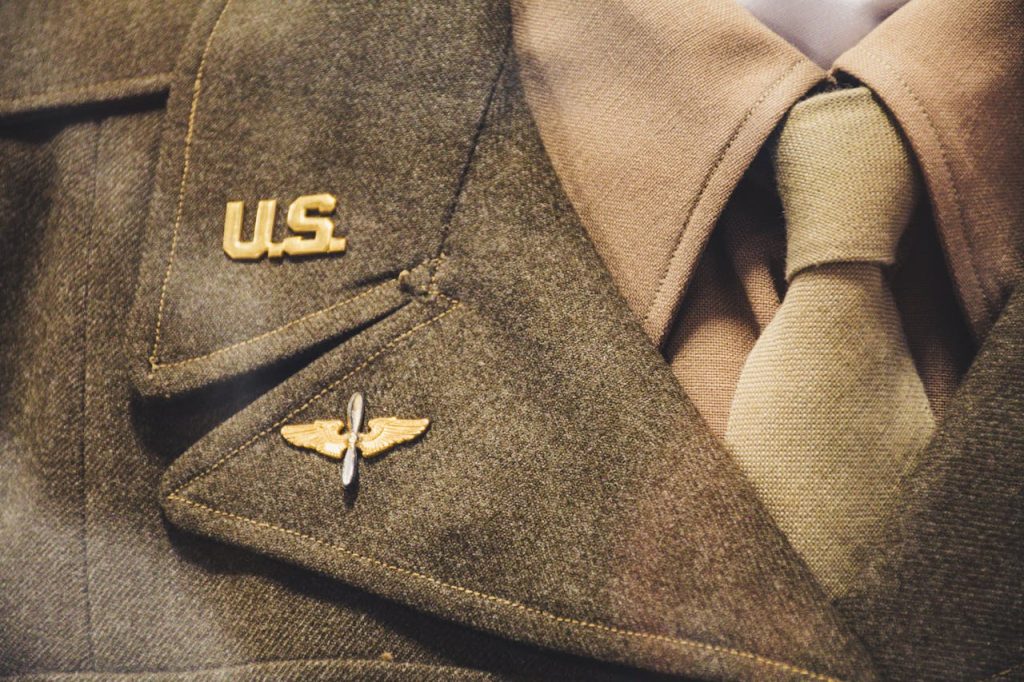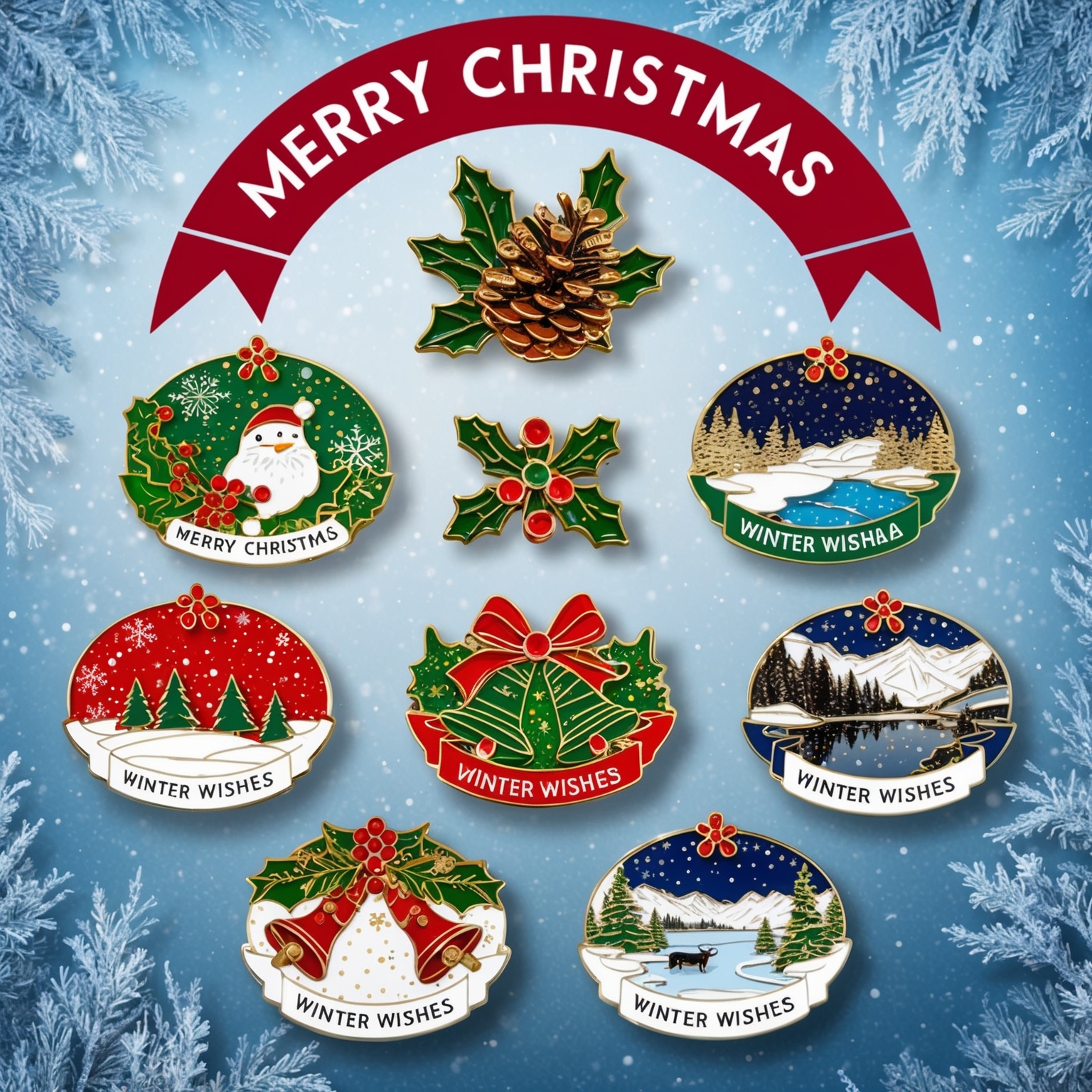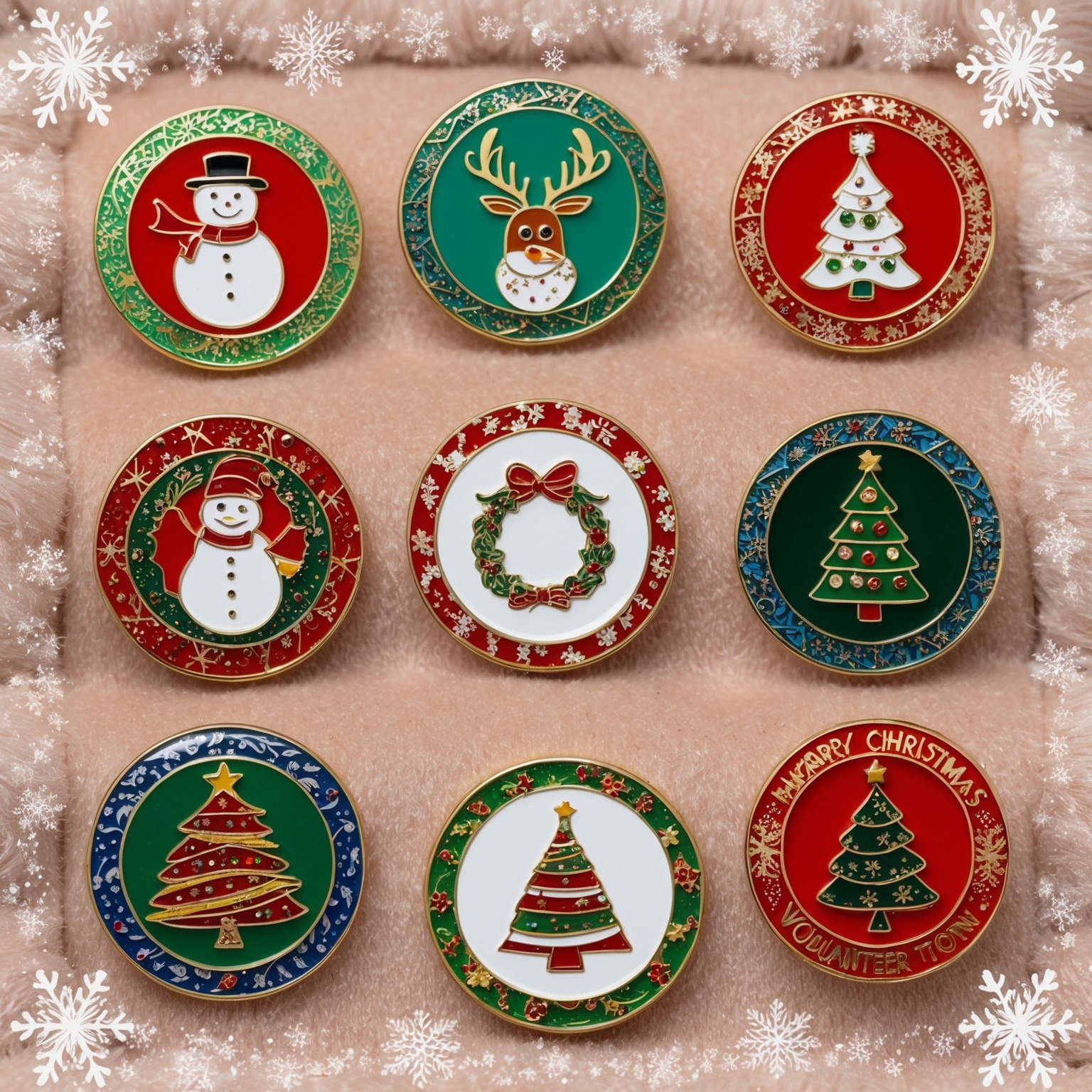Lapel pin collecting is a fascinating and rewarding hobby that has captured the interest of enthusiasts around the world. Whether you’re drawn to the intricate designs, the historical significance, or the sense of nostalgia that these small pieces of art can evoke, starting a lapel pin collection is an exciting journey. For beginners, the world of lapel pin collecting may seem vast and overwhelming, but with the right knowledge and guidance, anyone can build a collection that is both meaningful and valuable.
In this comprehensive beginner’s guide, we will explore everything you need to know to start your first lapel pin collection. From understanding the different types of lapel pins and where to find them, to tips on preserving, displaying, and valuing your collection, this guide will provide you with the foundation needed to embark on your collecting adventure. Whether you’re collecting for personal enjoyment or as an investment, this article will help you navigate the world of lapel pin collecting with confidence.
What Are Lapel Pins? A Brief Overview
Lapel pins are small, decorative items that are typically worn on the lapel of a jacket, coat, or shirt. These pins serve various purposes, from showcasing affiliation with a group or organization to commemorating special events or achievements. Over the years, lapel pins have become popular collector’s items due to their diverse designs, historical significance, and cultural value.
Types of Lapel Pins
Before you start collecting, it’s important to understand the different types of lapel pins available. Each type has its own unique characteristics, which can influence your collecting choices:
1. Hard Enamel (Cloisonné) Pins
Hard enamel pins, also known as cloisonné pins, are known for their smooth, polished finish and high-quality craftsmanship. The design is outlined with metal, and the recessed areas are filled with enamel paint. The pin is then baked at high temperatures and polished to create a durable, glossy surface. Hard enamel pins are often considered premium items due to their intricate detail and lasting quality.
2. Soft Enamel Pins
Soft enamel pins are similar to hard enamel pins but have a slightly different finish. The enamel is applied to the recessed areas of the pin, but it is not polished flat, leaving the metal outlines raised above the enamel. This creates a textured, tactile feel. Soft enamel pins are popular for their vibrant colors and affordability, making them a common choice for collectors.
3. Die-Struck Pins
Die-struck pins are created by stamping a design onto a metal surface using a custom die. These pins do not typically feature colored enamel and instead rely on the metal’s texture and finish to create the design. Die-struck pins are often used for awards, military insignia, and commemorative purposes due to their classic, understated appearance.
4. Offset Printed Pins
Offset printed pins are produced using a printing process that allows for detailed, full-color designs to be directly applied to the pin’s surface. These pins are ideal for complex designs, such as photographs or intricate logos, where traditional enamel filling would be impractical. Offset printed pins are often coated with an epoxy layer to protect the design and give the pin a glossy finish.
5. 3D Cast Pins
3D cast pins are created using a molding process that allows for three-dimensional designs with intricate details and shapes. These pins can be made from various metals, including pewter, brass, and zinc alloy, and are often used for custom designs that require a sculptural element. 3D cast pins are prized for their uniqueness and artistic appeal.
6. Vintage and Antique Pins
Vintage and antique pins are older lapel pins that were produced in previous decades or even centuries. These pins are highly sought after by collectors due to their historical significance, rarity, and the craftsmanship of the time. Collecting vintage and antique pins can be a rewarding way to connect with history and build a collection with a unique narrative.
Why Start a Lapel Pin Collection?
Lapel pin collecting offers a wide range of benefits, making it an appealing hobby for people of all ages and interests. Here are some reasons why you might consider starting your own lapel pin collection:
1. Expressing Personal Interests and Passions
Lapel pins come in countless designs, representing everything from sports teams and bands to political movements and historical events. By collecting pins that reflect your personal interests and passions, you can create a collection that tells your unique story.
2. Preserving History and Culture
Many lapel pins are tied to significant moments in history, cultural events, or iconic figures. By collecting these pins, you can preserve a piece of history and gain a deeper understanding of the past. This aspect of collecting can be particularly rewarding for history buffs or those interested in specific time periods or movements.
3. Building a Community
Lapel pin collecting is a social hobby that connects you with other collectors, both online and in person. Whether through trading, attending pin conventions, or participating in online forums, you’ll have the opportunity to meet like-minded individuals who share your enthusiasm for this unique art form.
4. Investment Potential
While most collectors start their journey out of passion, some lapel pins can appreciate in value over time, especially rare or limited-edition pieces. By carefully curating your collection and staying informed about market trends, you may find that your collection not only brings you joy but also becomes a valuable asset.
5. Creative Expression
For those with a creative streak, lapel pin collecting offers an outlet for artistic expression. Designing your own custom pins or curating a themed collection allows you to explore your creativity and showcase your artistic vision.
Getting Started: How to Build Your First Lapel Pin Collection
Starting a lapel pin collection is an exciting endeavor, but it’s important to approach it with a plan. Here are the key steps to building your first collection:
1. Define Your Collecting Goals
Before you start acquiring pins, take some time to define your collecting goals. Consider the following questions:
- What types of lapel pins interest you the most (e.g., vintage, sports-related, cultural, political)?
- Are you collecting for personal enjoyment, investment, or both?
- Do you want to focus on a specific theme, time period, or style?
- How much are you willing to invest in your collection?
By clarifying your goals, you’ll be better equipped to make informed decisions about which pins to collect and how to grow your collection over time.
2. Research and Educate Yourself
Knowledge is key to successful lapel pin collecting. Take the time to research the different types of pins, the history behind them, and the current market trends. Here are some resources to help you get started:
- Books and Guides: There are several books and guides available that cover the history, design, and value of lapel pins. Look for reputable sources that provide in-depth information and insights.
- Online Forums and Communities: Joining online forums and communities dedicated to lapel pin collecting can be invaluable. These platforms allow you to connect with experienced collectors, ask questions, and learn from their expertise.
- Auction Sites and Marketplaces: Explore online auction sites and marketplaces to see what types of pins are available and how much they’re selling for. This will give you a sense of the market value of different pins and help you identify potential additions to your collection.
3. Start Small and Build Over Time
When you’re first starting out, it’s a good idea to start small and gradually build your collection. Focus on acquiring a few pins that you’re genuinely interested in, rather than trying to amass a large number of pins quickly. This approach allows you to learn as you go and ensures that each pin in your collection has personal significance.
4. Where to Find Lapel Pins
One of the most enjoyable aspects of lapel pin collecting is the hunt for new additions to your collection. Here are some of the best places to find lapel pins:
1. Online Marketplaces
Online marketplaces such as eBay, Etsy, and Amazon are popular places to find a wide variety of lapel pins. These platforms allow you to search for specific pins, compare prices, and purchase from sellers around the world. Be sure to check the seller’s ratings and reviews to ensure a positive buying experience.
2. Specialty Websites and Shops
There are numerous websites and online shops dedicated specifically to lapel pins. These specialty stores often offer a curated selection of pins, including limited editions, vintage pieces, and custom designs. Some well-known lapel pin retailers include PinMart, The Pin People, and PinSource.
3. Thrift Stores and Flea Markets
Thrift stores, flea markets, and antique shops can be treasure troves for finding unique and vintage lapel pins. While it may take some digging, the thrill of discovering a rare or valuable pin in an unexpected place is one of the joys of collecting.
4. Pin Conventions and Trade Shows
Pin conventions and trade shows are events where collectors gather to buy, sell, and trade lapel pins. These events provide a great opportunity to meet other collectors, learn more about the hobby, and acquire new pins for your collection. Some of the most popular pin conventions include PinFest and the Annual Pin Collectors’ Meet.
5. Direct from Events or Organizations
Many lapel pins are produced as souvenirs for specific events, such as sports games, concerts, or political rallies. Attending these events and purchasing pins directly can be a great way to add meaningful items to your collection. Additionally, organizations such as clubs, charities, and companies often produce lapel pins for their members or supporters, which can also be valuable collectibles.
5. Building a Themed Collection
One of the most rewarding aspects of lapel pin collecting is building a themed collection. A themed collection is focused on a specific topic, event, or style, and allows you to dive deep into a particular area of interest. Here are some ideas for themed collections:
1. Sports Teams and Events
Collecting lapel pins related to your favorite sports teams or major sporting events can be a fun and dynamic theme. This could include pins from championship games, Olympic events, or memorabilia from your local team.
2. Historical and Political Pins
If you’re interested in history or politics, consider collecting lapel pins related to significant historical events or political movements. This could include campaign pins, military insignia, or pins from important cultural moments.
3. Pop Culture and Entertainment
For fans of movies, music, and pop culture, collecting lapel pins featuring your favorite characters, bands, or franchises can be a highly enjoyable theme. This could include pins from comic conventions, band tours, or limited-edition releases.
4. Travel and Souvenir Pins
Travel enthusiasts may enjoy collecting lapel pins from different countries, cities, or tourist attractions. Souvenir pins from famous landmarks or vacation destinations can serve as a tangible reminder of your travels.
5. Artistic and Custom Designs
If you appreciate art and design, consider building a collection of artist-designed or custom lapel pins. Many independent artists and designers create limited-edition pins with unique, creative designs that can add a touch of artistry to your collection.
6. Caring for Your Lapel Pin Collection
Proper care and maintenance are essential to preserving the value and appearance of your lapel pin collection. Here are some tips for keeping your pins in top condition:
1. Avoid Exposure to Sunlight and Moisture
Direct sunlight can cause colors to fade, and moisture can lead to corrosion or rust. Store your lapel pins in a cool, dry place, away from direct sunlight and humidity.
2. Handle with Care
When handling your lapel pins, be gentle to avoid scratching or bending them. If possible, wear gloves to prevent oils from your skin from transferring onto the pins. If your pins need cleaning, use a soft, dry cloth to gently wipe them down.
3. Store Pins Properly
If you’re not displaying your lapel pins, store them properly to prevent damage. Use protective storage options such as padded cases, foam inserts, or individual pouches. Label your storage containers to make it easy to locate specific pins.
4. Regularly Inspect Your Collection
Periodically inspect your lapel pin collection for any signs of damage, wear, or discoloration. Address any issues promptly to prevent further deterioration. This regular inspection also gives you an opportunity to reorganize your display or update your collection.
7. Displaying Your Lapel Pin Collection
Displaying your lapel pin collection is an important part of the collecting experience. A well-organized and visually appealing display allows you to enjoy your collection and share it with others. Here are some popular display methods:
1. Display Cases
Display cases offer a combination of protection and visibility, making them ideal for showcasing your lapel pin collection. Shadow boxes, glass cases, and acrylic cases are all excellent options for creating a professional-looking display.
2. Frames
Framing your lapel pin collection is a space-saving and elegant way to display your pins. You can use traditional picture frames, shadow box frames, or custom pin display frames to create a visually striking presentation.
3. Display Boards
Display boards, such as cork boards, foam boards, or magnetic boards, provide a versatile and accessible way to showcase your lapel pins. These boards can be placed on a wall, easel, or tabletop, allowing for easy customization and updates.
4. Display Albums
For collectors who prefer a more organized and portable display method, display albums are an excellent option. These albums allow you to store and showcase your pins in a compact format, making it easy to view and arrange your collection.
8. Valuing and Selling Your Lapel Pins
As you build your lapel pin collection, you may be interested in understanding the value of your pins or selling some of them. Here’s how to approach valuing and selling lapel pins:
1. Factors That Affect Value
Several factors can influence the value of a lapel pin, including:
- Rarity: Pins that were produced in limited quantities or are difficult to find are generally more valuable.
- Condition: Pins in mint or near-mint condition, with minimal wear or damage, are typically worth more.
- Historical Significance: Pins associated with significant events, people, or movements can command higher prices.
- Demand: Pins that are highly sought after by collectors, due to their popularity or theme, can increase in value.
2. Getting an Appraisal
If you believe you have a valuable lapel pin, consider getting it appraised by a professional. An appraiser can provide an expert assessment of the pin’s value based on its rarity, condition, and market demand. This is particularly important if you plan to sell or insure the pin.
3. Selling Your Lapel Pins
When selling your lapel pins, you have several options:
- Online Marketplaces: Websites like eBay, Etsy, and Amazon are popular platforms for selling lapel pins. These sites allow you to reach a wide audience and set your own prices.
- Auction Houses: For rare or high-value pins, consider selling through an auction house. Auctions can attract serious collectors and often result in competitive bidding.
- Pin Conventions and Trade Shows: Selling your pins at conventions and trade shows allows you to connect with other collectors and negotiate sales in person.
- Specialty Shops: Some specialty shops and online stores buy lapel pins from collectors. These shops may offer a fair price for your pins, especially if they specialize in the type of pins you’re selling.
Embarking on Your Lapel Pin Collecting Journey
Lapel pin collecting is a hobby that offers endless possibilities for discovery, creativity, and personal expression. Whether you’re drawn to the artistic designs, the historical significance, or the thrill of the hunt, building a lapel pin collection is a rewarding experience that can bring joy and satisfaction for years to come.
As you embark on your lapel pin collecting journey, remember that the key to a successful collection is passion, knowledge, and patience. Take the time to educate yourself, explore different types of pins, and connect with other collectors. By following the tips and best practices outlined in this guide, you’ll be well on your way to building a lapel pin collection that is not only impressive but also deeply meaningful to you.
If you are interested in buying high quality custom trading pins, you can call us at 1-800-641-1299 or fill out a FREE quote form.







